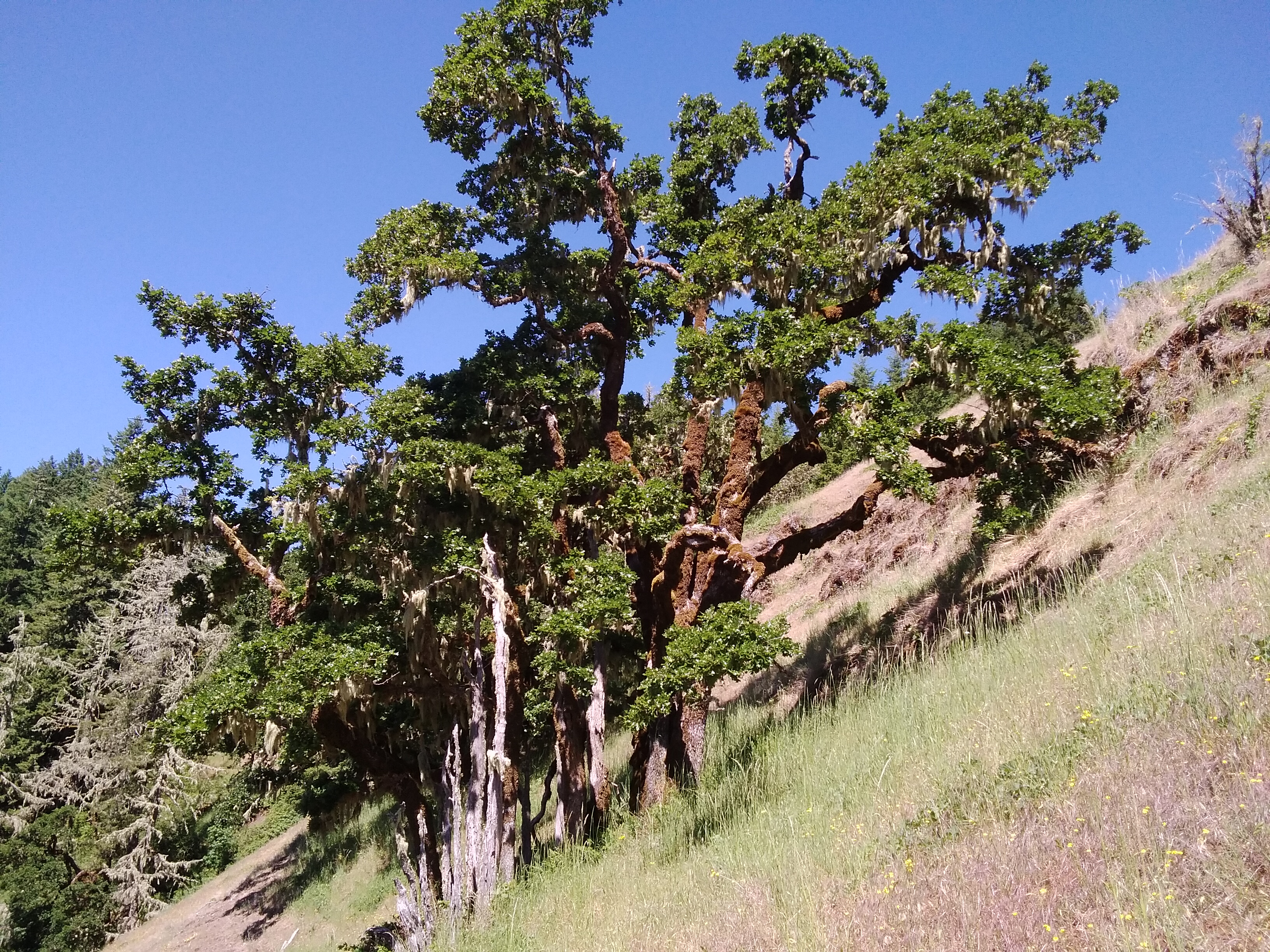
Searching for meadows and marvelous oaks
By Julia Fields
July 2021
The prairie and oak inventory crew is at it again, assessing remote forest clearings for hidden oaks and diverse prairies throughout the Willamette Valley. They never know what they’ll find when they set out from Corvallis in the morning. Will it be a weedy grassland? A quaint meadow bursting with native wildflowers? A high-elevation clearing surrounded by oaks with stunning views of the snow-topped Cascades? Or everyone’s least favorite, a blackberry and poison oak thicket?
This is the third year that the Bureau of Land Management (BLM) has engaged IAE to conduct the prairie and oak inventory. To access remote sites, the crew drives down long and winding logging roads and then bushwhacks through Douglas fir forest and up steep terrain. They use tablets to map locations of oaks, large populations of native plants suitable for seed collection, rare plants, wildlife, and large landmark trees. They also map non-native species and woody plants that are encroaching on open meadows. Later this year, we will compile all the data into site reports that provide a comprehensive overview of each area, including its ecological treasures and threats to native habitats.
The driving force behind all this data collection is to identify high priority oak and prairie habitat and potential habitat on BLM-managed lands within the Willamette Valley and its foothills. We look at each site through a restoration lens and make recommendations for management prescriptions to improve native habitats. Willamette Valley prairie and oak habitats are some of the rarest ecosystems in the United States. A variety of factors have led to the decline of these habitats, including fire suppression, urban and agricultural development, and invasion by non-native weeds. With less than 1% of prairie habitat and less than 10% of oak habitat remaining (when compared to pre-European settlement conditions), it is no surprise that the species associated with and dependent upon these habitats are also imperiled. There are five threatened and endangered plant species, two federally listed butterflies, and one federally listed bird associated with Willamette Valley prairie and oak habitats, as well a myriad of additional rare plants, songbirds, invertebrates, and other species that call the prairies and oaks in the Willamette Valley home.
The BLM manages a vast network of lands throughout the Willamette Valley, including thousands of acres of prairie and oak habitat or potential habitat. Conservation and restoration of these lands is crucial to the recovery of prairie and oak dependent listed species. IAE is proud to survey these sites and provide valuable information to the BLM to assist in conserving rare habitats.
At the end of a long day, the prairie and oak inventory crew drives back down the twisting gravel roads. They are tired from a hard day of hiking and bushwhacking and their minds are full of the new plants encountered, sweeping vistas, and special moments captured in the mountains. Who knows what they will find tomorrow?
Restoration
Research
Education
Get Involved
Contact
Main Office:
4950 SW Hout Street
Corvallis, OR 97333-9598
541-753-3099
[email protected]
Southwest Office:
1202 Parkway Dr. Suite B
Santa Fe, NM 87507
(505) 490-4910
[email protected]
© 2024 Institute for Applied Ecology | Privacy Policy


